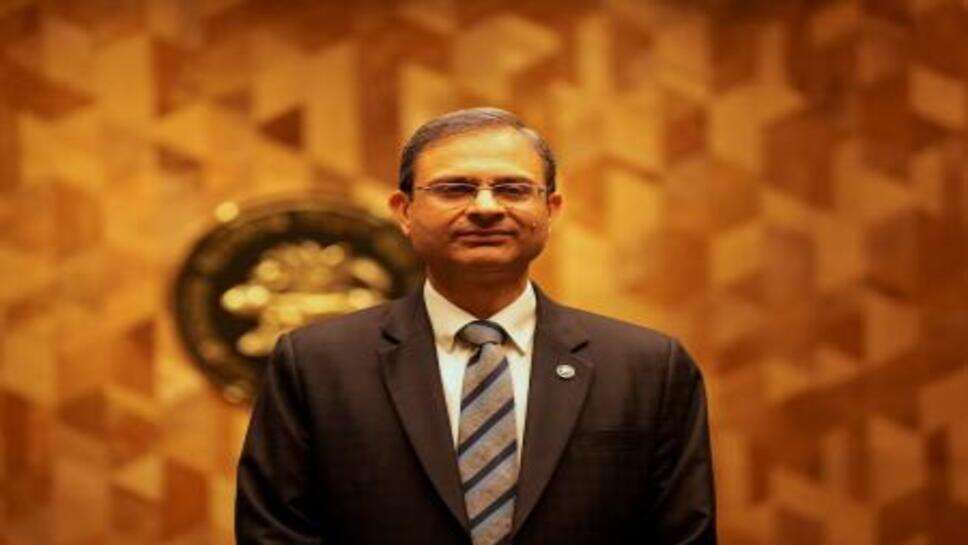Inflation Dip Opens Door for RBI Rate Cut, Says Governor Malhotra

India’s monetary policy may be headed for a more accommodative phase, as Reserve Bank of India (RBI) Governor Sanjay Malhotra signaled the possibility of a rate cut in the coming months. The conditional nature of his statement—tying any potential move to moderating inflation or weakening economic growth—offers a glimpse into the central bank’s cautious but responsive stance amid shifting macroeconomic winds.
A Balancing Act: Growth and Inflation
Governor Malhotra emphasized that the RBI’s primary objective is to ensure price stability while supporting economic growth. With inflation dipping in recent months and signs of uneven demand across sectors, the RBI is evaluating whether further easing may be required. He noted that if inflation continues to remain within or below the central bank’s comfort zone, and if growth shows signs of strain, the Monetary Policy Committee (MPC) could move to reduce interest rates again.
This balancing act is critical. A premature rate cut could reignite inflationary pressures, while delayed action might dampen economic momentum. Malhotra’s remarks suggest that the RBI is trying to walk this tightrope carefully.
Recent Inflation Trends Create Breathing Room
Consumer price inflation has shown significant signs of cooling, largely due to a decline in food prices and a drop in global commodity costs. This has opened a window of opportunity for the central bank to shift from its earlier inflation-fighting stance toward a more supportive approach. The current inflation figures are now comfortably within the RBI’s target range, which further strengthens the case for a potential rate cut.
According to Malhotra, if these trends continue, the central bank will not hesitate to act in favor of growth. However, he also warned that inflation could rise again due to unpredictable factors such as weather-related disruptions or global oil price volatility.
Growth Indicators Flash Mixed Signals
On the growth front, India’s economy has remained resilient, but there are warning signs. Private investment remains cautious, exports have slowed, and household consumption—especially in urban areas—has shown mild fatigue. Sectors like auto sales, real estate, and consumer durables have recently seen patchy performance.
Malhotra pointed out that while overall GDP growth remains strong, momentum is showing signs of divergence across industries. The services sector continues to perform well, but manufacturing and infrastructure have witnessed modest slowdowns. If this weakness persists or worsens, the RBI may need to act to provide a cushion.
A Flexible Policy Stance
The RBI’s current policy stance is “neutral,” which means it retains the flexibility to either raise or lower rates depending on evolving data. This is a change from the earlier “withdrawal of accommodation” posture, which had been in place during periods of high inflation. A neutral stance offers the RBI room to maneuver, and Malhotra made it clear that the central bank is open to all possibilities.
The governor reiterated that the RBI will be “data-dependent” in all its decisions and that any move will be made only after careful analysis of inflation, growth, external factors, and financial stability risks.
Market Expectations
Following Malhotra’s comments, financial markets have begun to factor in the possibility of a rate cut in the near future. Yields on government bonds have already begun to adjust, and banking analysts suggest that a 25 to 50 basis point cut could materialize over the next few monetary policy cycles—if inflation remains subdued and growth indicators worsen.
The bond and equity markets appear optimistic about the shift in tone, with investors betting on improved liquidity and lower borrowing costs, which could spur consumption and investment.
Focus on Transmission
While cutting rates is one lever, the RBI is also concerned about the transmission of rate changes to the real economy. Previous rate cuts have not always been fully passed on to consumers by banks, often due to liquidity constraints or concerns over asset quality. Malhotra acknowledged this and said that the RBI will keep a close eye on how much of the monetary policy adjustments are being translated into actual lending rate reductions.
To improve transmission, the central bank has been pushing for more efficient linkages between lending rates and benchmark indicators, and ensuring ample liquidity in the system.
External Factors in Play
Though India’s domestic conditions are central to its monetary policy, Malhotra also recognized the influence of global developments. Geopolitical tensions, currency volatility, and interest rate trends in other major economies can impact capital flows, inflation, and export competitiveness. He assured that the RBI is closely monitoring these factors and remains prepared to act decisively if any external shocks affect India’s macroeconomic stability.
In particular, with some advanced economies moving toward monetary easing, India could find more space to lower rates without risking capital flight or currency weakness.
What Could Trigger the Next Move?
The RBI is expected to watch three key developments in the coming months:
-
Sustained decline in inflation – especially core inflation, which reflects long-term trends.
-
Weakening in GDP growth or key sector performance – particularly in private investment and domestic consumption.
-
Stability in external factors – including global oil prices and the geopolitical environment.
Should these align favorably, the central bank could reduce rates to stimulate domestic demand without fear of runaway inflation.
Implications for Borrowers and Businesses
A rate cut would be a boon for borrowers, as it could reduce EMIs on loans and improve access to credit. It would also benefit businesses by lowering financing costs and potentially boosting consumer demand. Sectors like housing, automobiles, and consumer durables could particularly benefit from cheaper loans and improved liquidity.
Start-ups and MSMEs, which often rely on flexible and low-interest credit, would also welcome any such move. For large corporates, rate cuts could improve margins and enhance capital investment plans, especially if demand outlooks improve.
A Delicate Dance Ahead
While Governor Malhotra’s comments are not a guarantee of an immediate rate cut, they mark a notable shift in tone. The RBI appears to be preparing the ground for a possible easing cycle, should the data justify it. For now, it’s a waiting game—watching the interplay of inflation, growth, and global dynamics.
What’s clear, however, is that the central bank stands ready to support the economy if conditions demand it. With flexibility built into its policy stance and markets now primed for change, the RBI’s next steps will be closely watched—not just by economists and investors, but by businesses and households across the country.
